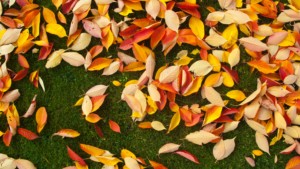Nov
Mosquitoes and your California and Arizona Outdoors.
When you think of the deadliest animal in the world, what pops into your mind? Crocodiles, hippos, one of the big cats…great guesses, but all of them are wrong. It’s actually…the mosquito. This fingernail-sized pest can carry Zika virus, Yellow fever, West Nile virus, and worst of all, Malaria. Much of the reported incidents of that is in very hot, humid regions on other continents. But we do get mosquitoes in the hot, dry desert climates of Arizona and California. So how can you enjoy your beautiful natural sod lawn without getting bitten? Here are a few ways.
- Citronella candles
These citrus/floral smelling candles are not only great for decoration, they can help keep mosquitoes away. These are most effective in an environment where the air is still – a covered patio is the perfect location. Always remember to extinguish them!
- Get rid of any standing water
Mosquitoes love standing water. In fact, it’s where they reproduce. Make sure to empty out anything that catches water – wheelbarrows, outdoor water toys, as well as gutters and drain lines.
- Keep your yard under control
This is an important one! Especially in warmer areas, mosquitoes prefer cooler areas in the shade. Use a lawnmower or a string trimmer to cut back brush, tree limbs, and high grass. Making sure any tall grass is trimmed and not creating shadows will make your grass lawn much less appealing to mosquitoes. This is not only good for keeping unwanted pests away, but is also good for your natural sod lawn in general.
West Coast Turf is the leader for California and Arizona products. Please contact us to learn more about what we can do for you and your property.
Visit us online at: https://www.westcoastturf.com
Comments Off on Mosquitoes and your California and Arizona Outdoors.Nov
You’ve Overseeded Your Warm Season Lawn. Now What?
By now, most of you who are going to overseed your California or Arizona sod have either begun the process or have had your seed down for a few weeks. Today, I want to discuss what to do now that you have the ryegrass growing and cooler temperatures are on the horizon.
Getting your ryegrass up and growing is obviously the first step to a successful winter lawn, but what about maintenance? How can you make sure your ryegrass is strong going into the winter and you will have a full stand of ryegrass once the temperatures begin to drop into the 40’s at night? There are several key items associated with a strong winter lawn but early preparation should be high on your list.
I know you put down a starter fertilizer with your seed but let’s remember that fertilizer will move freely in a saturated soil. The new plant took up most of the nutrients from the starter fertilizer application but the residual affect is limited because you’ve been keeping the seed wet for the past few weeks. So what exactly does this mean? Basically, what I’m trying to say is that once you’ve had your ryegrass lawn in for 2-3 weeks I would advise getting a second fertilizer application on the grass.
Comments Off on You’ve Overseeded Your Warm Season Lawn. Now What?

